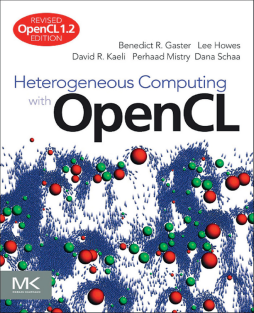
BOOK
Heterogeneous Computing with OpenCL
Benedict Gaster | Lee Howes | David R. Kaeli | Perhaad Mistry | Dana Schaa
(2012)
Additional Information
Book Details
Abstract
Heterogeneous Computing with OpenCL, Second Edition teaches OpenCL and parallel programming for complex systems that may include a variety of device architectures: multi-core CPUs, GPUs, and fully-integrated Accelerated Processing Units (APUs) such as AMD Fusion technology. It is the first textbook that presents OpenCL programming appropriate for the classroom and is intended to support a parallel programming course. Students will come away from this text with hands-on experience and significant knowledge of the syntax and use of OpenCL to address a range of fundamental parallel algorithms.
Designed to work on multiple platforms and with wide industry support, OpenCL will help you more effectively program for a heterogeneous future. Written by leaders in the parallel computing and OpenCL communities, Heterogeneous Computing with OpenCL explores memory spaces, optimization techniques, graphics interoperability, extensions, and debugging and profiling. It includes detailed examples throughout, plus additional online exercises and other supporting materials that can be downloaded at http://www.heterogeneouscompute.org/?page_id=7
This book will appeal to software engineers, programmers, hardware engineers, and students/advanced students.
- Explains principles and strategies to learn parallel programming with OpenCL, from understanding the four abstraction models to thoroughly testing and debugging complete applications.
- Covers image processing, web plugins, particle simulations, video editing, performance optimization, and more.
- Shows how OpenCL maps to an example target architecture and explains some of the tradeoffs associated with mapping to various architectures
- Addresses a range of fundamental programming techniques, with multiple examples and case studies that demonstrate OpenCL extensions for a variety of hardware platforms
With parallel computing now in the mainstream, this book provides an excellent reference on the state-of-the-art techniques in accelerating applications on CPU-GPU systems.
-David A. Bader, Georgia Institute of Technology
